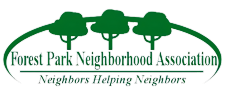The Inspiring History of Forest Park: Baltimore’s Hidden Gem in 21216
Welcome to Forest Park, Baltimore
Tucked away in the heart of West Baltimore, the Forest Park community (ZIP code 21216) is more than just a neighborhood — it’s a living story of resilience, pride, and transformation. With its historic homes, tree-lined streets, and strong sense of community, Forest Park holds a special place in Baltimore’s rich tapestry.
Let’s dive into the history of this amazing community — and why it continues to shine today.
How Forest Park Began: A Dream of Suburban Life
The story of Forest Park starts in the late 1800s and early 1900s, during a period of rapid growth in Baltimore. As downtown became more crowded and industrialized, families sought quieter, greener neighborhoods nearby. Developers saw an opportunity to create a suburban-style escape just a few miles from the city center.
🌳 The area’s name — Forest Park — reflects the lush woodlands that once covered the land. The community was built with wide streets, large lots, and beautiful architecture, offering a peaceful lifestyle with easy access to Baltimore.
By 1928, the opening of the Forest Park Golf Course (one of Baltimore’s first municipal golf courses) helped solidify the neighborhood’s reputation as an upscale, desirable place to live.
A Thriving Community in the Mid-20th Century
By the 1940s and 1950s, Forest Park had truly come into its own. The neighborhood was filled with stunning examples of Tudor Revival, Colonial Revival, and Craftsman-style homes — many of which still stand today (Source).
🏫 Forest Park High School, established in 1924, quickly became a cornerstone of the community. It produced many notable alumni who went on to influence Baltimore and beyond. Forest Park High School is still an important institution today, evolving with the community’s changing needs.
In the decades after World War II, Forest Park became a beacon for Baltimore’s growing African American middle class, as racial integration efforts took hold despite lingering barriers like redlining (Learn about redlining here).
Through these changes, Forest Park residents built a community grounded in pride, education, and cultural vibrancy.
Today’s Forest Park: History Meets Hope
Fast-forward to today: Forest Park remains one of Baltimore’s proudest and most resilient neighborhoods.
🏡 Many homes have been lovingly maintained or restored, preserving the classic styles that make Forest Park so distinctive.
🏌️♂️ The Forest Park Golf Course has been revitalized as a recreational and cultural hub.
🛠️ Community-driven efforts like Baltimore Green Network are working to transform vacant lots into green spaces, strengthening neighborhood pride and sustainability.
New generations of residents are deeply engaged in making sure Forest Park’s future is as vibrant as its past — with a strong focus on youth programs, local entrepreneurship, and historic preservation.
Why Forest Park Still Matters
The history of Forest Park isn’t just about the past — it’s about community pride, resilience, and vision for a better future.
If you walk through Forest Park today, you’ll see a neighborhood that’s endured, adapted, and thrived. It stands as a symbol of what makes West Baltimore so powerful: strength, creativity, and community spirit.
Whether you’ve lived here for generations or you’re just discovering the magic of 21216, Forest Park’s story is a reminder that real neighborhoods are built on heart.
